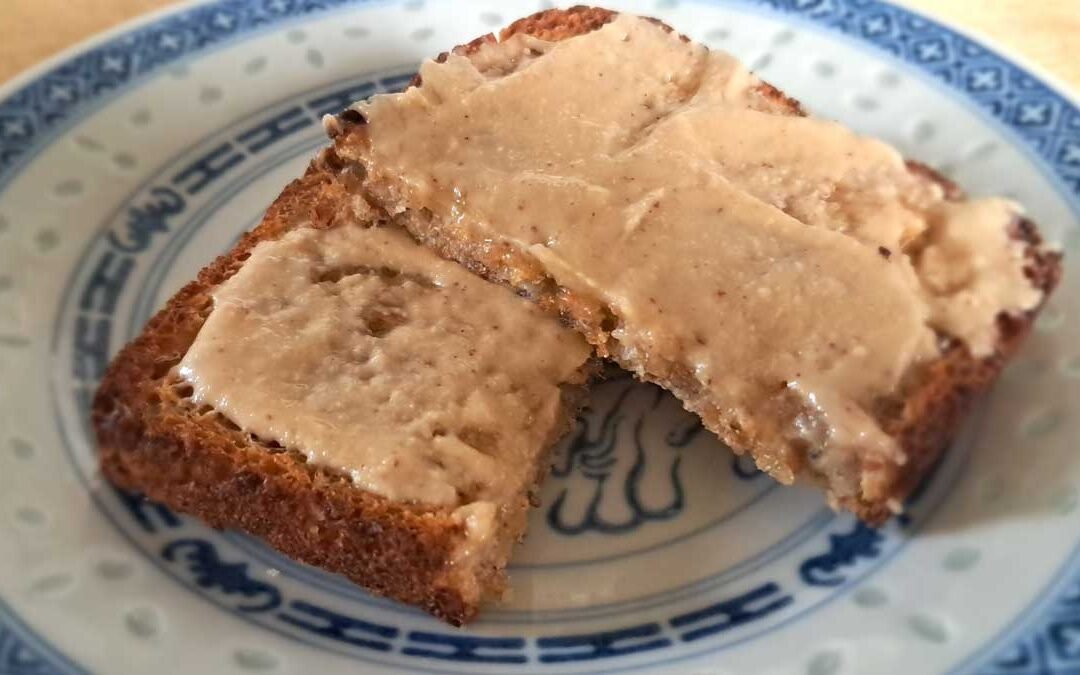Back in 2022, I purchased 30 peanut seeds from TradeMe with the goal of making my own peanut butter.
Even back then, I knew it was going to take a while. I’m quite used to starting small and building my capacity, so for three seasons I’ve grown, harvested, processed, and saved seed from successive peanut crops.
I learned something about growing peanuts each year. I started with generic information from the internet, and as the seasons passed, I observed the growth, and tweaked my methods accordingly.
In the 2024-5 season, I think I got it right. The seeds were good. My rows were spaced appropriately. I planted them at the right time, in the right way. There was the right amount of rain at the right times.
They were mounded and mulched at the right moment. And I harvested them before they started germinating again.
And because of all of that, this year I found myself in a position to achieve that original goal of home-grown peanut butter.
Processing peanuts
If anything, the thing I mucked up this year was the drying. I was a victim of my own success and because I had so many peanuts, I ended up packing them too closely on the drying racks.
So I experienced some mould issues, and I lost a few. But even then, I caught it pretty early so I still had a decent-enough harvest.
After putting aside the seed I’ll need for spring, I began working my way through a 15 litre bucket of peanuts.
Popping peanuts out of their hard shells by hand is dirty, and it’s rough on the thumbs. So I took it slow, de-shelling a container over a YouTube video each day. It took a couple of weeks to get through the bucket.
Eventually, I was left with 2 kilograms of raw peanuts for peanut butter. Those then needed to be roasted, and following that, have the papery bitter skins removed.

It’s quite a job to do all that. While the roasting only takes 5 minutes, removing the skins by hand takes another couple of hours on a windy day. I didn’t do a perfect job, but probably good enough.
Ready for the blender
I decided to roast them again before they went in. In hindsight, I wish I’d roasted them at a slightly higher temperature for a bit longer to push them for more colour, but I guess that’s a learning for next time (dear future me: try 160ºC for 15 minutes, stirring every 5).
My internet research basically said pop your roasted peanuts in a blender with a bit of salt. So after they cooled, I added them to the blender with half a teaspoon of salt to start.
The key is knowing it’s gonna take a long-ass time for your food processor to get it to a butter consistency. Research said at least 10 minutes of blending, which is a long time for a food processor to be going continuously.
So it’s another couple of hours or so of babysitting it—turning it on and off, giving it a wee rest, and repeating. I made my way through a good chunk of The Invisible Life of Addie LaRue, reading chapters between rounds at the food processor.
I’m pretty sure in the end it was much closer to half an hour. Even with the rests, everything was very warm.
At first it was crushed nuts. Then it was like breadcrumbs, until it got to a dough-like consistency and didn’t seem to move much.
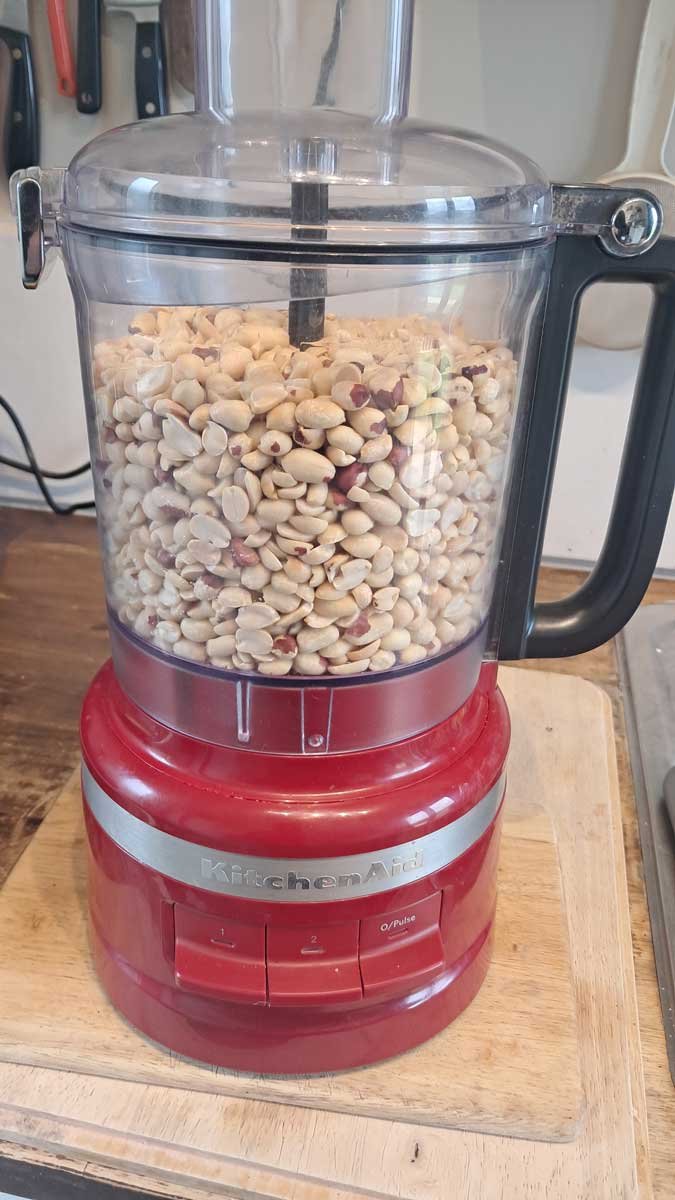
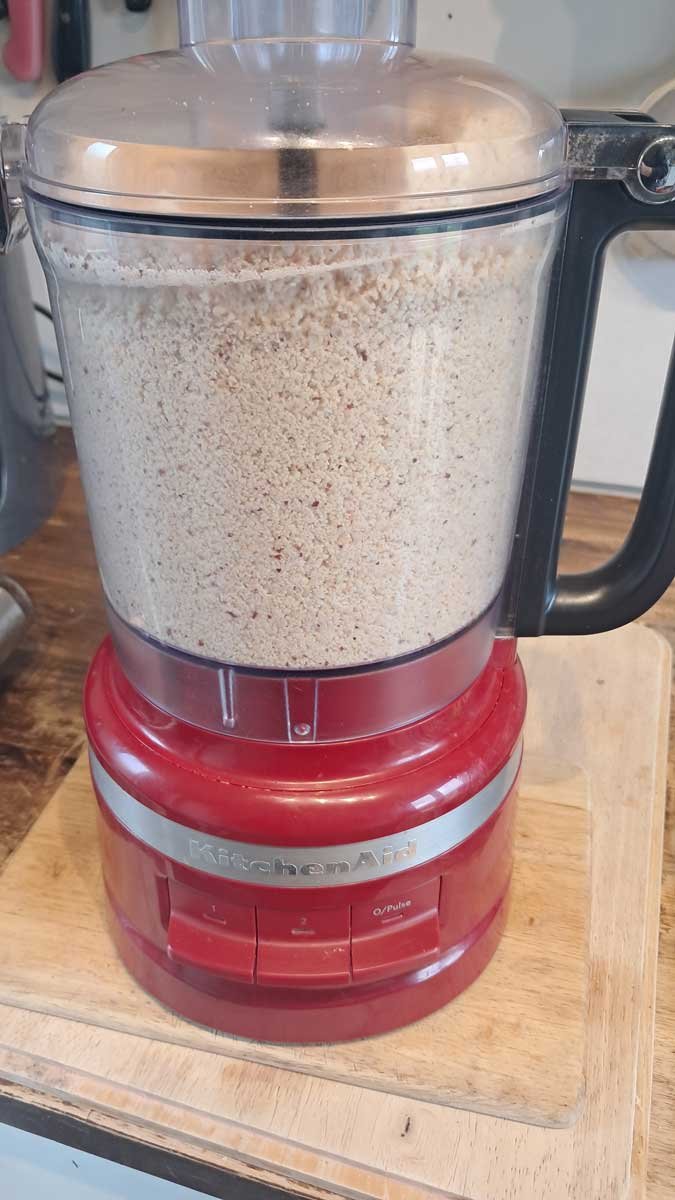
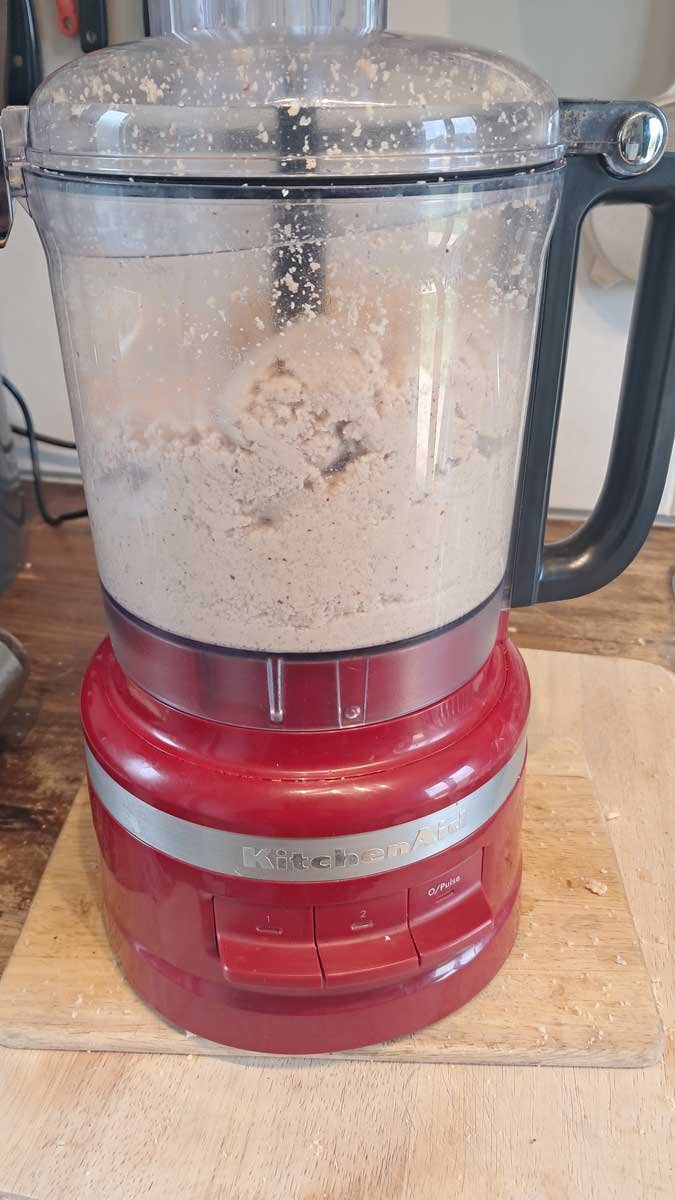
That’s when I tipped it all out, smooshed it up a bit, and put it back. It was in some pretty solid clumps at that stage.
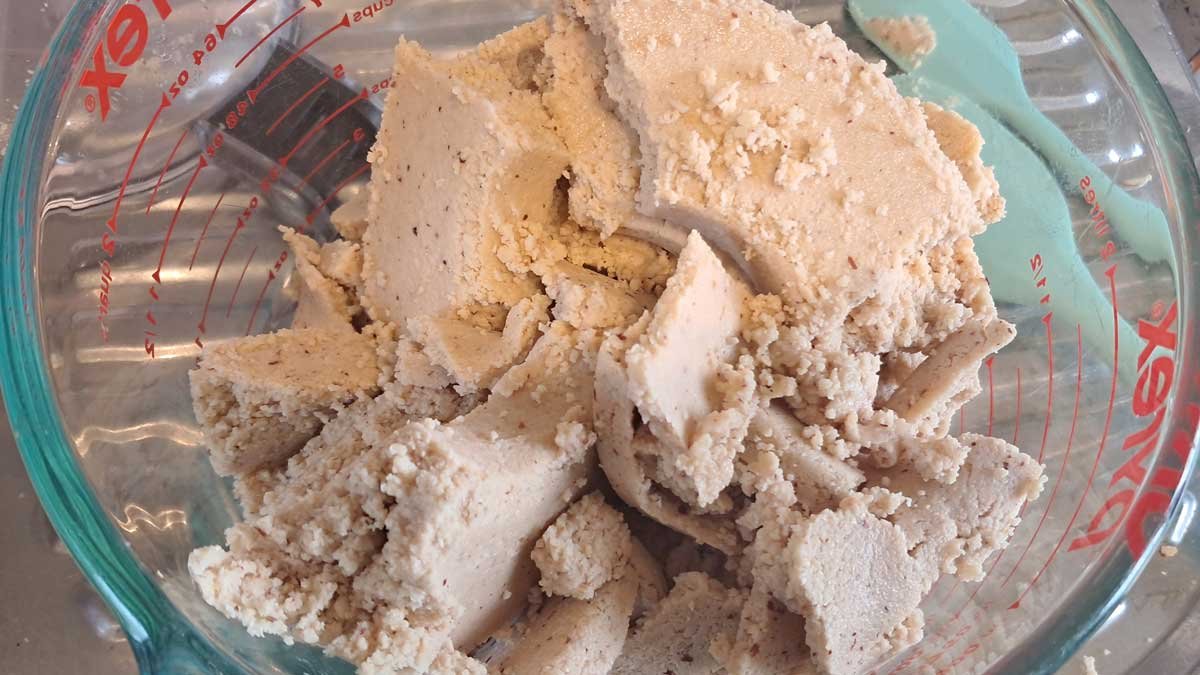
I kept going and got to a hummus-like consistency, and I just kept going until I got to peanut butter.
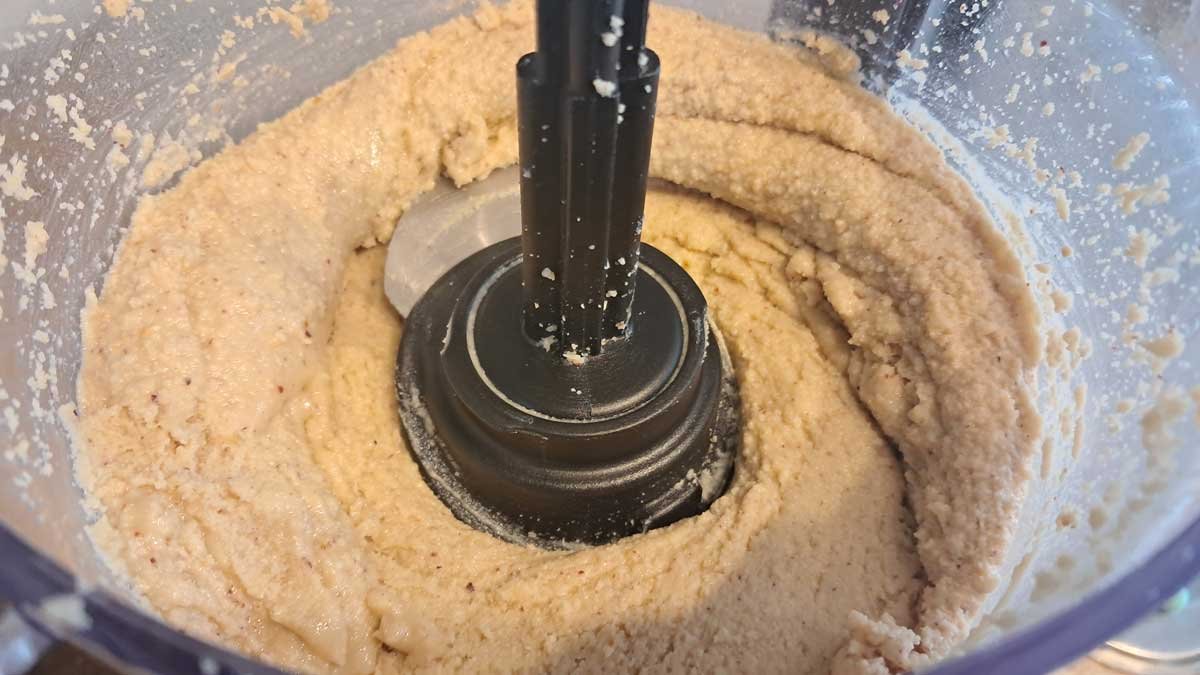
But even then, it turns out I wasn’t there yet. This really takes a very long time in a home food processor.
I found the peanut butter was kind of covering my teeth? It had a weird texture. So I kept blending until that problem reduced. It’s still there now, but less so.
As I was testing it, I had a vague memory of peanut butter sticking to the roof of my mouth as a kid. That’s a thing peanut butter is, or was, known to do. But the peanut butter I buy doesn’t do that so much. So maybe the food scientists have done something to improve mouth-feel? Perhaps a different variety of peanut would do that less? I don’t know.
Having spent most of my morning standing at a blender, I decided I didn’t care, and that I was at peanut butter.
I’d added another teaspoon-and-a-half of salt (2 tsp total) and a bit of sweetener along the way to make it taste how I wanted. You can use sugar or any kind of sweetener. Just stay away from xylitol if you’re planning to feed it to your dogs.
Then it was time to pour into sterilised jars. I’ll probably keep one in the fridge and use the other one out of the pantry, to see how it keeps both ways.
One month’s supply
Honestly, I go through peanut butter—around 750g per month. After transferring my mix into jars, I have a little over 900g. Maybe a month and a half’s worth if I were having it for breakfast each day.
It took 2 years of building seed stock; 5 months of growing; a morning to harvest; 2 weeks of processing; and then an afternoon roasting and removing skins; followed by another morning of blending into peanut butter.
And it turns out to get to a full-year’s supply, I’d need to increase production by about 10.
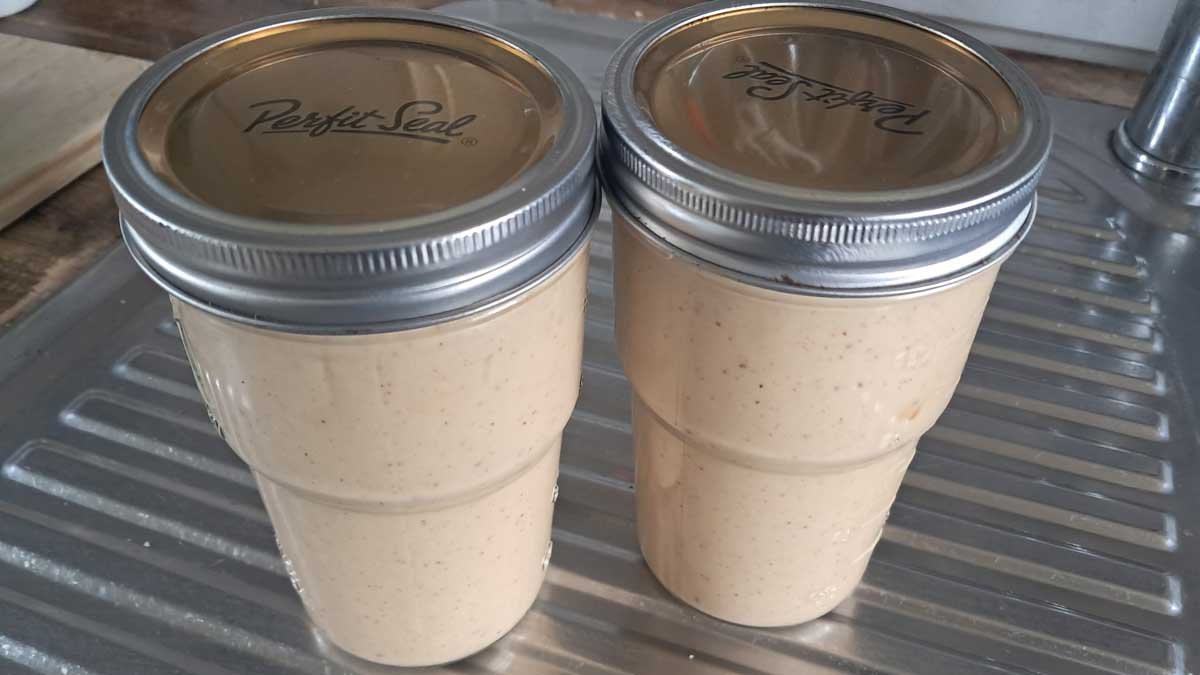
My honest assessment is I don’t love it on toast. Which is a little problematic given that’s why I went through all this in the first place, but that mouth-feel is hard to ignore.
I’m thinking that a better roast before processing might be important here. That’s why I’d like to adjust that part of the process in future.
You can also see the remains of the brown skins floating there in the jars. Sometimes you can’t get every skin off. That doesn’t matter so much in most situations, but it turns out, that does matter in peanut butter! I swear I can taste that bitter note in the final result. So I would pick out the stubborn ones and make them dog treats in the future.
But I’ll tell you what. Later that night I made satay noodles with tofu and broccoli using my peanut butter for dinner. It was so smooth and creamy. Almost carbonara-like. It was immensely satisfying, and I think I’ll be finding a number of uses for it within my cooking and baking, even if it’s not on my toast.
Every year I am struck by how cheap peanuts are compared to the effort it takes me as a home grower to get anything at all.
The thing about an experiment like this is the effort it takes to do all that work is quite extravagant. It really highlights the value of modern processing systems, which probably make every single stage of this process much easier. The fact we can buy a jar of peanut butter for under $5 is kinda miraculous!
This year, I managed to grow a pile of peanuts that I could pick up—already processed—from my local supermarket for about $16 (they’re currently $4 for 500g).
Comparatively, if I were to be paid a living wage for all the work I’ve done in the last 9 months to get to my jars of peanut butter, they’d be worth over $200 each!
Modern food systems are really incredible.

